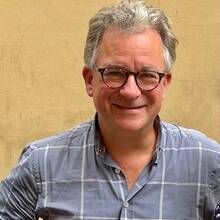The Mass celebrated today in Lourdes by Pope Benedict XVI brought back memories for me of the one celebrated by Pope John Paul II on his visit in August 2004. As it turned out, it was his last foreign trip. He was already a very sick man, and within a year he would be dead.
It turned out to be a powerful parade of vulnerability and suffering – at three moments especially. He arrived at the Grotto, was lifted out of the Popemobile onto a prie-dieu to the strains of a choir singing Pierre, tu es Pierre. Suddenly, just moments after he bowed his head in prayer before the statue of the Immaculate Conception, he fell backwards. The crowd groaned. His secretaries moved forward to catch him and to pull him into a chair. He looked startled, as old people do when their bodies go AWOL. His prayer was read for him: “I share a time of life marked by physical suffering, yet not for that reason any less fruitful in God’s wondrous plan”.
The second touching moment came at the end of the Rosary, when a young handicapped man in a wheelchair was brought forward to receive a blessing. The two men in wheelchairs gazed at each other, wordless and expressionless: the Vicar of Christ dribbled from the edge of his mouth, slumped and speechless. The pomp and regalism attached to the papacy vanished, at that moment. What other world leader – what other organization – could risk such naked vulnerability?
Halfway through John Paul II’s homily at Mass the next day - a reflection, inevitably, on Mary – came the third poignant moment. The Pope suddenly interrupted his slurred French, and fought to catch his breath. He hoarsely whispered something in his native tongue which a Polish reporter in the press tent translated for us. “Help me!”, the Pope gasped into the microphone. Then he banged the altar, took a sip of water and slurred: “I must finish.” Like an athlete summoning all his strength to reach the finishing line, he did – another 10 minutes in French. It was a tour de force. The Lourdes Medical Bureau doctor, Patrick Theillier, told me the next day that it was “medically inexplicable” how the Pope could do what he did. L’energie intérieure -- c’est la chose, he said.
John Paul II’s pilgrimage ended later that afternoon where it had started. He sat at the Grotto praying for eight minutes, his hands trembling gently, his eyes lifted to the statue of the Virgin. His face, frozen by Parkinson’s, betrayed little. But he was for those minutes the beating heart of the global Church, a suffering pilgrim like thousands before him, kneeling still at the place where once a 14-year-old asthmatic girl heard a breeze and met a Lady. No one sick or elderly who saw John Paul II could have felt, at that moment, wholly alone.
Watching from across the river Gave with the other reporters, I suddenly grasped it, that thing we can spend our lives not understanding – that thing which Lourdes teaches: that health and vigour and intelligence and beauty will all slip away. But that doesn’t mean we become less human. We’re not less, when we have less and can do less. L’energie intérieure -- c’est la chose.
Austen Ivereigh
What Lourdes teaches
Show Comments ()
1
Comments are automatically closed two weeks after an article's initial publication. See our comments policy for more.
16 years 10 months ago
Thank you for sharing these moving and spirit-bracing reminiscences of a Pope who spent himself in the service of his brothers and sisters.
The latest from america
As emergency workers searched for survivors and tried to recuperate the bodies of the dead, Pope Leo XIV offered his prayers for people impacted by the latest shipwreck of a migrant boat off the coast of Yemen.
The Archdiocese of Miami celebrated the first Mass for detainees at “Alligator Alcatraz,” the Trump administration’s controversial immigrant detention center in the Florida Everglades.
Eight decades after the end of World War II, Father George Zabelka exists as a symbol of conscience, one who can communicate the message of Gospel nonviolence.
At a Mass for the Jubilee of Youth outside Rome, Pope Leo exhorted over a million young people to be "seeds of hope" and a "sign that a different world is possible."







